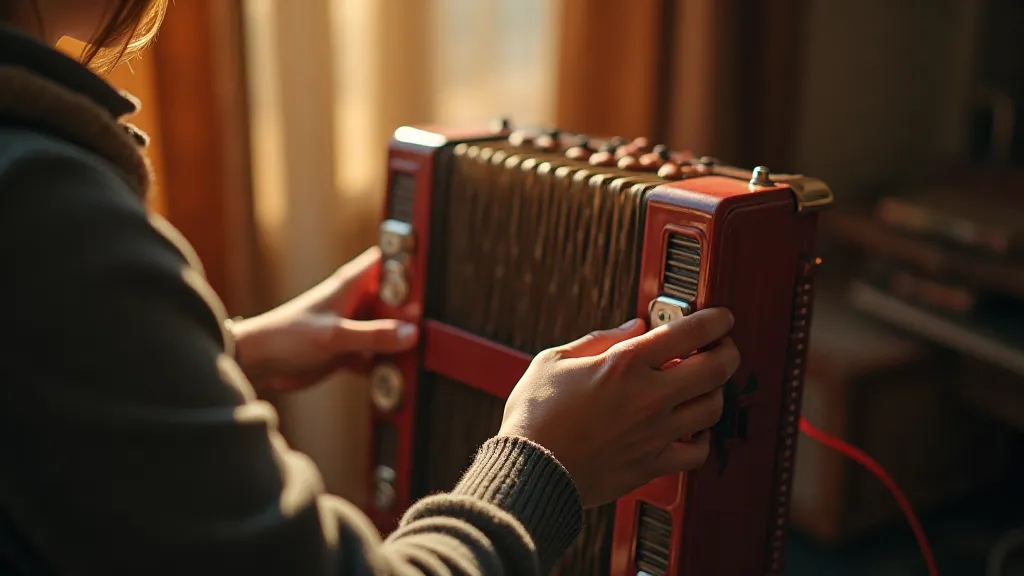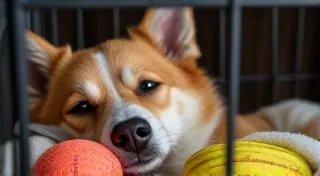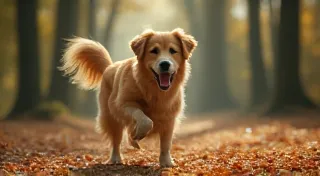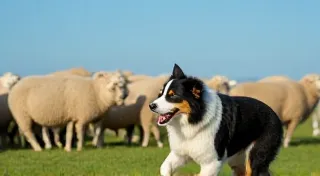The Echo of Ancestry: Decoding Breed-Specific Behavioral Imperatives
Imagine, if you will, an antique accordion. Not a gleaming, modern model, but one worn smooth by decades of calloused fingers, its bellows cracked with the map of a thousand melodies played in smoky dance halls and hushed parlor rooms. Each imperfection tells a story – a story of laughter and sorrow, of communal joy and quiet contemplation. Now, consider the dog you share your life with. Like that accordion, your canine companion carries within them an echo of their ancestry, a silent symphony of traits shaped by millennia of selective breeding and the relentless pressures of survival. Understanding this “echo” isn’t just fascinating; it’s essential for responsible pet ownership and truly effective dog training.

Beyond Breed Profiles: A Deeper Look
Most websites offer breed profiles, neatly categorizing dogs as “friendly,” “protective,” or “energetic.” While these labels offer a starting point, they often lack nuance. A “protective” breed, for instance, isn't inherently aggressive. Their instinct to guard likely stems from generations spent safeguarding livestock or territory – a vital role in their ancestral environment. Dismissing this history and expecting a dog to simply "turn off" a deeply ingrained instinct is not only unrealistic but also unfair. Furthermore, understanding the intricacies of canine communication extends far beyond simple labels; learning to decode dog body language is a crucial step in truly connecting with your dog and understanding their needs.
My own experience with a Borzoi – a breed originally bred for wolf hunting in Russia – illustrates this beautifully. Their elegant appearance belies a deeply ingrained prey drive. Early training focused on recall and redirection, acknowledging the inherent impulse to chase. Simply scolding the behavior was ineffective; it required understanding the “why” behind the action and channeling that energy into appropriate outlets, like lure coursing. This approach, rooted in recognizing the breed’s historical role, proved far more successful than any punitive method. Many breeds have traits stemming from specific jobs and environments, and sometimes these behaviors manifest in unexpected ways.
The Working Dog’s Legacy
Consider the herding breeds – Border Collies, Australian Shepherds, German Shepherd Dogs. Their ancestors weren't simply companions; they were essential partners in managing flocks of sheep or cattle across vast landscapes. This demanded intense focus, an innate understanding of movement, and a willingness to subtly influence behavior. A modern-day herding dog may not have sheep to manage, but that instinct to "herd" can manifest in attempts to control children or even other pets. Recognizing this innate tendency and providing appropriate mental stimulation – puzzle toys, trick training, obedience classes – can prevent frustration and redirect that energy constructively. It's often the case that these dogs, lacking their historical purpose, require diligent owner attention to properly channel their energy and intelligence. Many owners also grapple with excessive barking, a common frustration; exploring dealing with dog barking can provide invaluable insight and practical solutions.
Similarly, retrieving breeds – Labrador Retrievers, Golden Retrievers – were bred to retrieve waterfowl from cold waters. This translates to an eagerness to please, a love of carrying objects, and a natural affinity for water. Exploiting these ingrained traits is key to positive reinforcement training. A simple game of fetch isn’t just fun; it’s tapping into a deeply rooted instinct. These dogs are often exceptionally good at learning tricks and responding to training, making them incredibly rewarding companions.
Scent Hounds: The Nose Knows
Scent hounds – Beagles, Bloodhounds, Basset Hounds – possess an extraordinary sense of smell, honed over centuries of tracking game. Their noses dictate their world, and their determination to follow a scent can be overwhelming. This isn's disobedience; it’s a deeply ingrained imperative. Trying to suppress this instinct with harsh commands is counterproductive. Instead, harness it! Scent work and tracking exercises provide a safe and stimulating outlet for these incredible noses, fostering a stronger bond between dog and owner. These activities are not just about providing exercise; they’re about satisfying a fundamental need. Owners of these breeds often find it beneficial to consider professional grooming practices; consulting resources on dog grooming basics can help maintain a healthy and manageable coat, especially given their propensity to roll around in all sorts of interesting smells!
I once volunteered at a Beagle rescue where many dogs struggled with leash pulling and a constant need to sniff everything. Traditional obedience training proved largely ineffective. It wasn't until we incorporated scent-based games and allowed them extended time to explore and sniff during walks that their behavior noticeably improved. Their contentment was palpable – they were finally allowed to be who they were.
Guardians and Companions: The Spectrum of Protection
Guardian breeds – Rottweilers, Doberman Pinschers, Akita – were bred to protect livestock and property. Their protective instincts are not a flaw; they are a testament to their purpose. However, this doesn't mean they should be raised to be aggressive or fearful. Early socialization is absolutely critical. Exposing them to a wide variety of people, dogs, and environments during their puppyhood helps them differentiate between genuine threats and harmless interactions. The critical period of socialization is so vital that inadequate socialization can lead to long-term behavioral issues, necessitating intensive remediation.
The key lies in building confidence and providing clear boundaries. A well-socialized guardian breed should be a loyal and protective companion, not a source of anxiety for others. Understanding the historical context of their role allows us to provide them with the training and socialization they need to thrive in a modern environment. Owners sometimes choose a specific breed based on its perceived qualities, and the Jack Russell Terrier, with its energetic and compact nature, is a popular choice; you can learn more about the Jack Russell breed profile for detailed information.
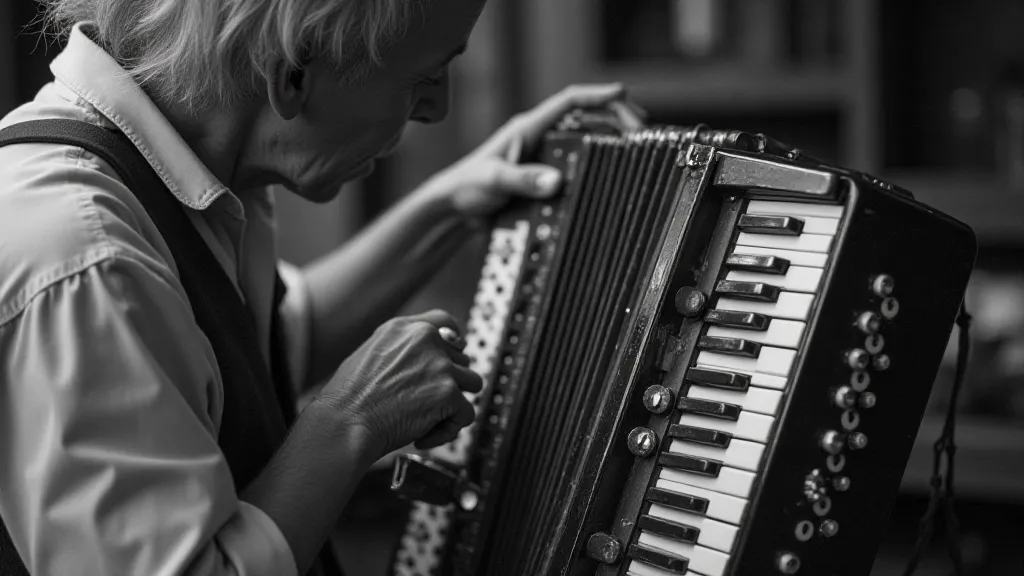
Puppyhood: A Crucial Foundation
The critical socialization period for puppies typically falls between 3 and 16 weeks of age. During this time, exposure to various sights, sounds, people, and dogs shapes their future behavior. For breeds with strong ancestral imperatives – guarding, herding, scenting – early and consistent socialization is paramount to ensure they develop into well-adjusted adults. This period is as crucial as the music played on an antique accordion; it sets the tone and defines the character of the future adult.
Imagine an antique accordion left untouched for decades. Its bellows might crack further, its keys might seize, and its musical potential might be lost. Similarly, a puppy deprived of crucial socialization experiences may develop behavioral problems rooted in fear and anxiety, making training significantly more challenging.
Responsible Ownership: Embracing the Echo
Understanding the “echo of ancestry” is a cornerstone of responsible pet ownership. It’s about moving beyond simplistic labels and appreciating the complex interplay of genetics and environment that shapes a dog’s behavior. It’s about recognizing that a dog’s actions are not always acts of defiance, but often reflections of their deeply ingrained history. The more deeply you understand this history, the more successfully you can adapt your training and management techniques to best suit your canine companion.
Just as a skilled restorer understands the nuances of an antique accordion – appreciating its history, preserving its character, and carefully repairing its imperfections – so too should we approach dog ownership with knowledge, empathy, and a commitment to providing a nurturing and stimulating environment that allows our canine companions to thrive. It's about embracing the echo of their ancestry and celebrating the unique bond we share. Recognizing these ancestral drives allows owners to create an environment where their dogs can be their best selves, both physically and mentally. Many owners find that integrating their dog's innate desires and drives into daily activities creates a truly rewarding partnership.
